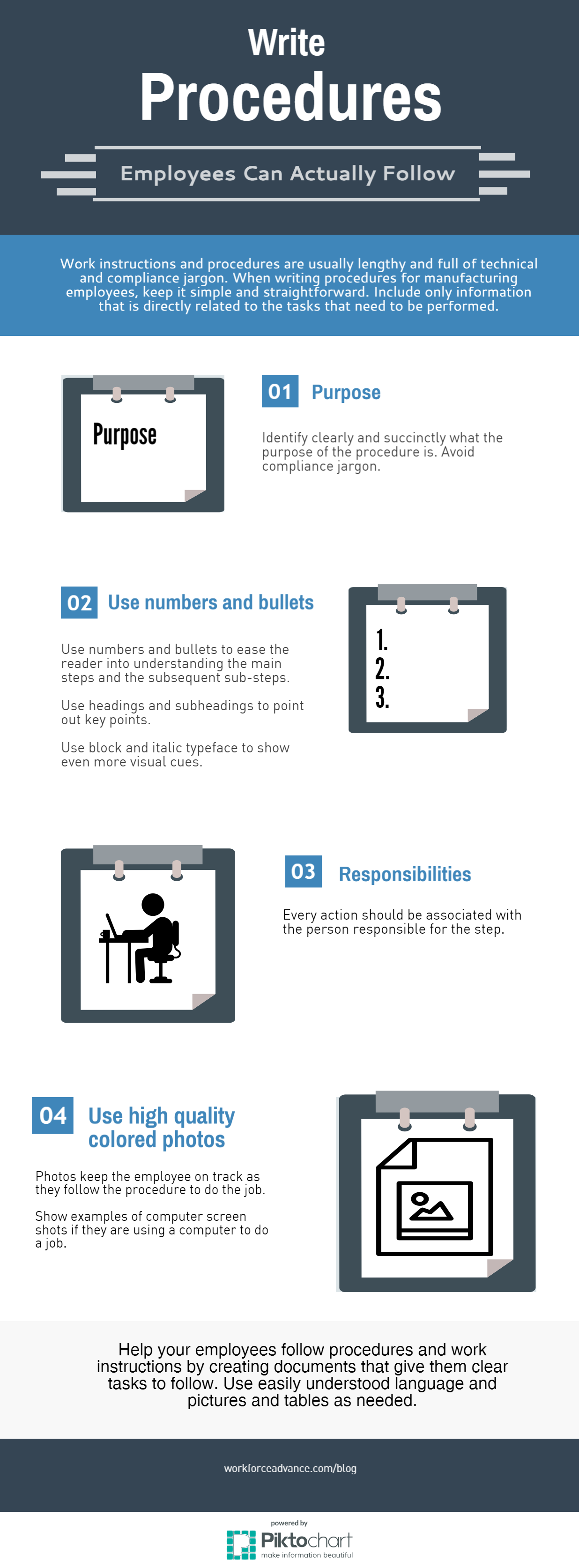Most employees will not read long and detailed procedures. The longer and detailed they are, the less likely they will even consider skimming the document. The purpose of a procedure is to ensure employees follow and perform the steps of a process so there are fewer errors and that each person following the procedure performs it the same way.[spacer height=”20px”]
Here are some tips to consider while writing or revising a procedure:
- In a couple of sentences, identify the purpose of the procedure. The purpose statement does not have to be very detailed but must be more informative than just “to meet regulatory requirements”.
[spacer height=”20px”] - Use bold type faced headings and subheadings.
- Headings and subheadings guides your employees as they read. It helps them see the key points.
- Avoid paragraphs that contain all instructions and instead number main steps and bulletize the substeps.
[spacer height=”20px”]
- Clearly outline responsibilities.
Identify early in the procedure is one person will be performing the whole procedure.
If multiple employees are responsible for different steps, begin each process step by identifying the individual responsible.
[spacer height=”20px”] - Use photos the right way! Don’t fill up the procedure or work instruction with tons of photos that make up a 60 page document. Instead use photos as clarification points. The photos should help the employee stay on track and assures them they are following the procedure correctly.
[spacer height=”20px”]
If a document just absolutely needs to have a lot of details and a lot of technical information, use table and charts as much as possible to lighten the document.[spacer height=”20px”]



